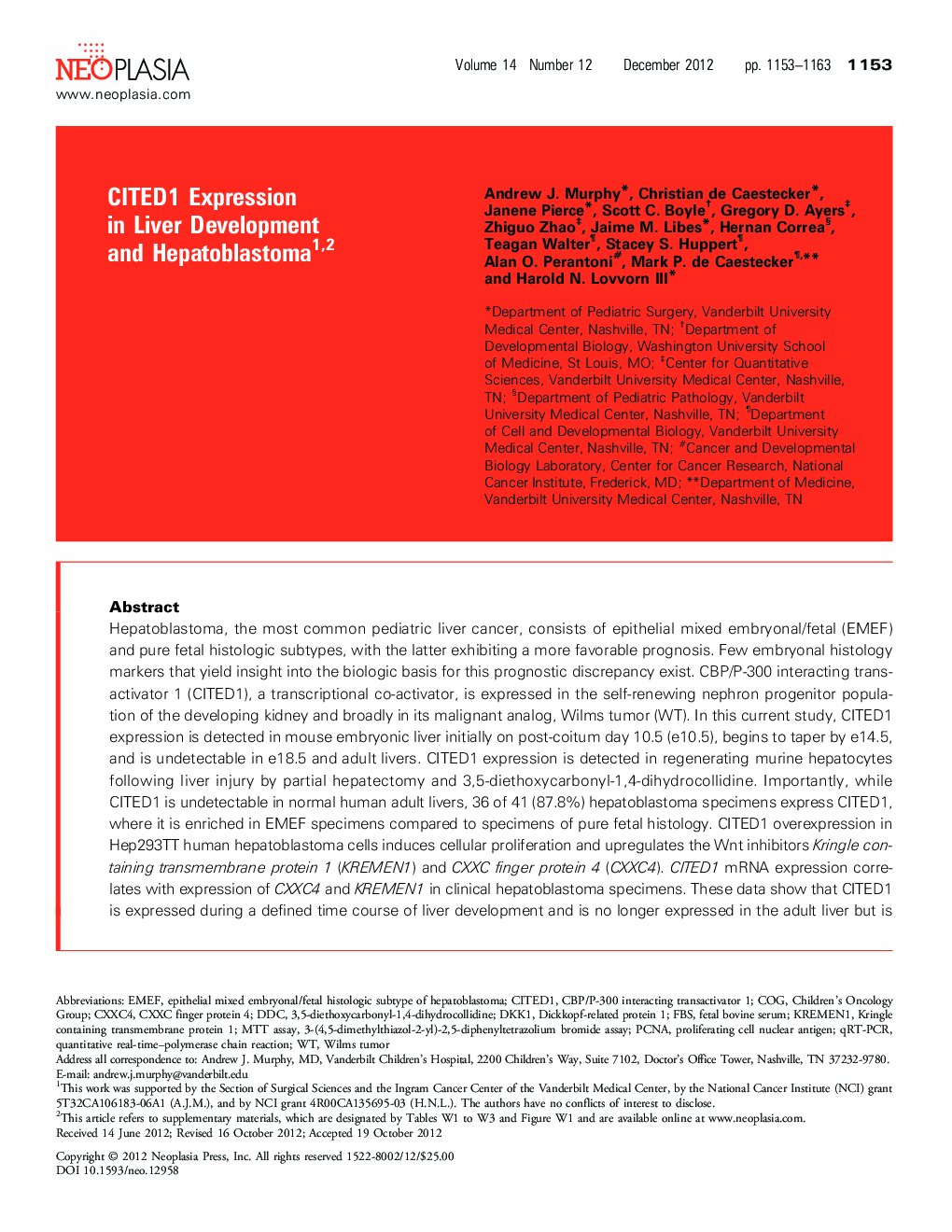| Article ID | Journal | Published Year | Pages | File Type |
|---|---|---|---|---|
| 2151366 | Neoplasia | 2012 | 20 Pages |
Abstract
Hepatoblastoma, the most common pediatric liver cancer, consists of epithelial mixed embryonal/fetal (EMEF) and pure fetal histologic subtypes, with the latter exhibiting a more favorable prognosis. Few embryonal histology markers that yield insight into the biologic basis for this prognostic discrepancy exist. CBP/P-300 interacting transactivator 1 (CITED1), a transcriptional co-activator, is expressed in the self-renewing nephron progenitor population of the developing kidney and broadly in its malignant analog, Wilms tumor (WT). In this current study, CITED1 expression is detected in mouse embryonic liver initially on post-coitum day 10.5 (e10.5), begins to taper by e14.5, and is undetectable in e18.5 and adult livers. CITED1 expression is detected in regenerating murine hepatocytes following liver injury by partial hepatectomy and 3,5-diethoxycarbonyl-1,4-dihydrocollidine. Importantly, while CITED1 is undetectable in normal human adult livers, 36 of 41 (87.8%) hepatoblastoma specimens express CITED1, where it is enriched in EMEF specimens compared to specimens of pure fetal histology. CITED1 overexpression in Hep293TT human hepatoblastoma cells induces cellular proliferation and upregulates the Wnt inhibitors Kringle containing transmembrane protein 1 (KREMEN1) and CXXC finger protein 4 (CXXC4). CITED1 mRNA expression correlates with expression of CXXC4 and KREMEN1 in clinical hepatoblastoma specimens. These data show that CITED1 is expressed during a defined time course of liver development and is no longer expressed in the adult liver but is upregulated in regenerating hepatocytes following liver injury. Moreover, as in WT, this embryonic marker is reexpressed in hepatoblastoma and correlates with embryonal histology. These findings identify CITED1 as a novel marker of hepatic progenitor cells that is re-expressed following liver injury and in embryonic liver tumors.
Keywords
Related Topics
Life Sciences
Biochemistry, Genetics and Molecular Biology
Cancer Research
Authors
Andrew J. Murphy, Christian de Caestecker, Janene Pierce, Scott C. Boyle, Gregory D. Ayers, Zhiguo Zhao, Jaime M. Libes, Hernan Correa, Teagan Walter, Stacey S. Huppert, Alan O. Perantoni, Mark P. de Caestecker, Harold N. III,
